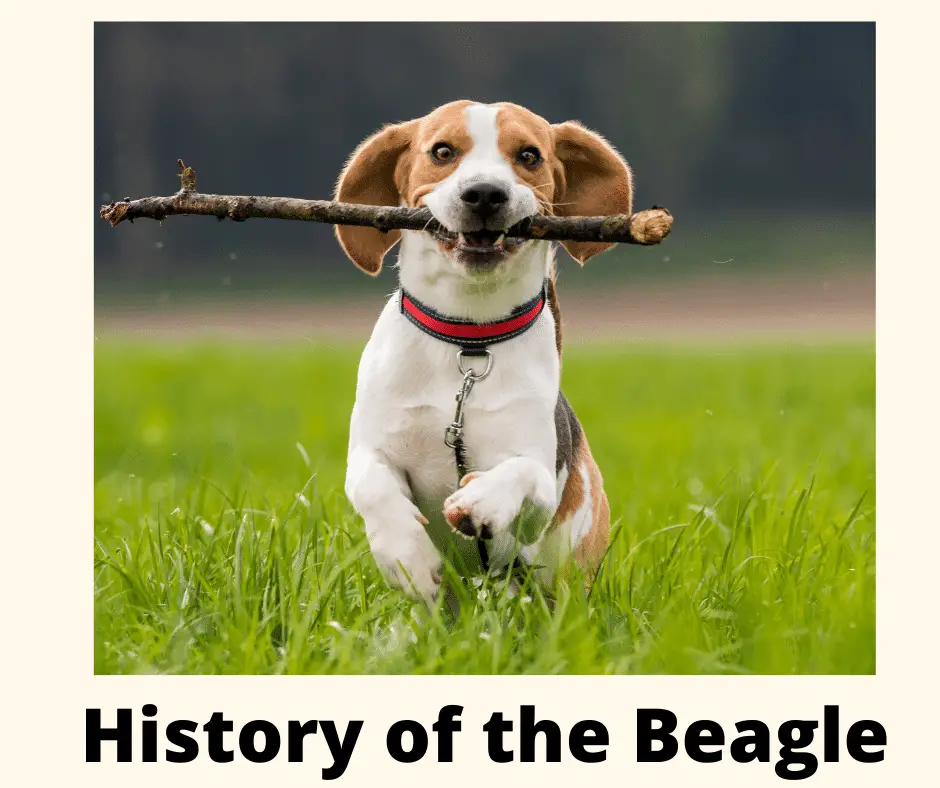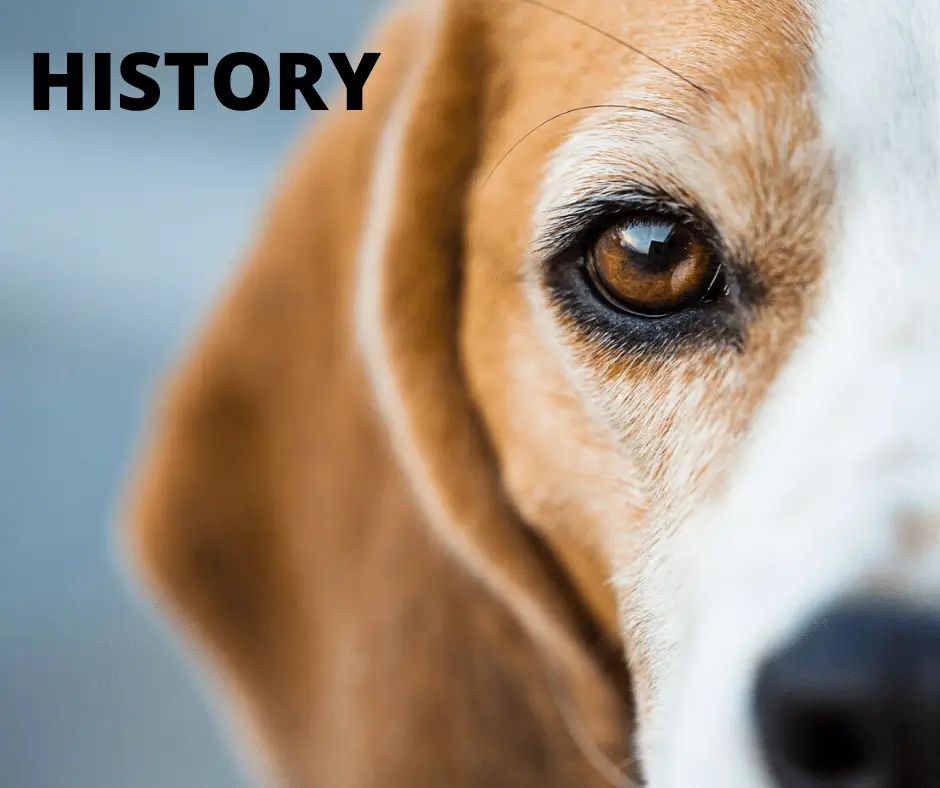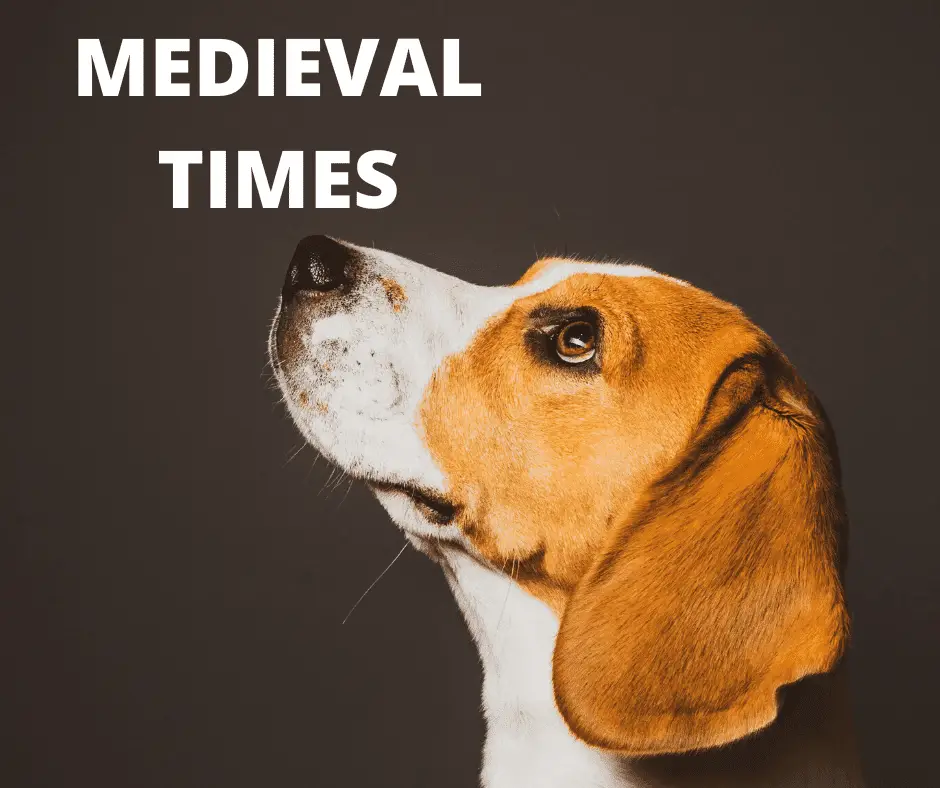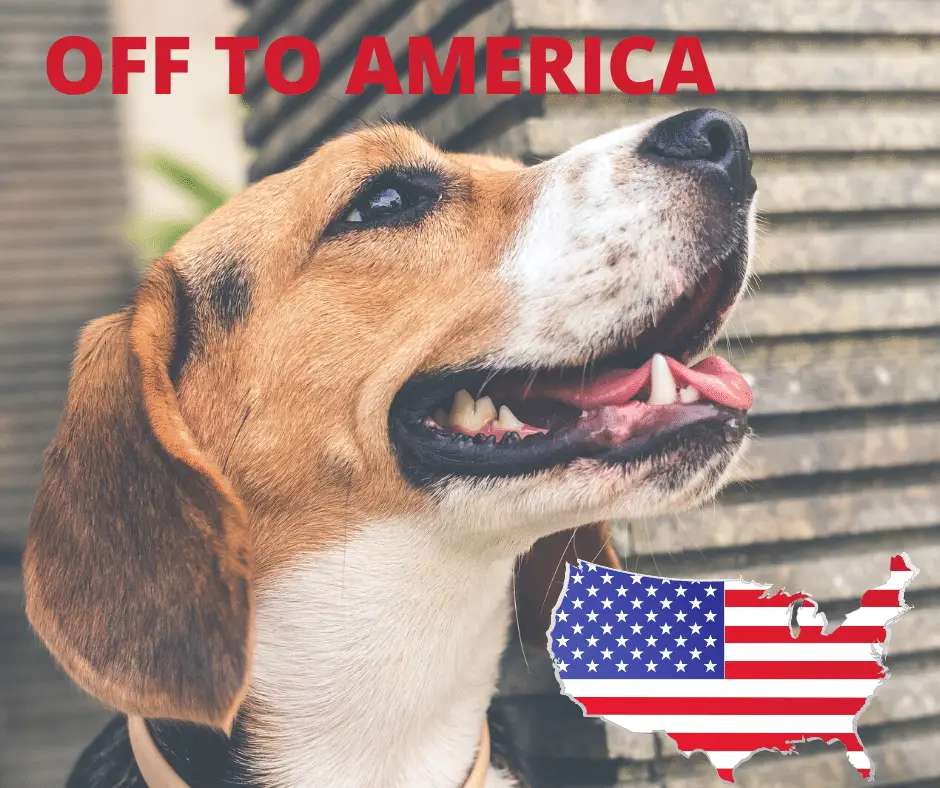The Beagle dog breed is one of the most popular breeds for households. They are known for their energetic and carefree nature; however, they sometimes can be a little stubborn. The Beagle we see today is a mix of different breeds, such as the Talbot Hound, the Southern Hound, the Northern Hound, and the Harrier.
Getting to know The Beagle
The Beagle dog is a small hound that resembles a large foxhound and harrier dog breed. Initially, this breed was bred in England for hunting hares or rabbits. Nowadays, these dogs engage in detection due to their excellent tracking instinct and superior sense of smell.

Beagles originated from Great Britain.
Reverend Phillip Honeywood of Great Britain, in the year 1830, was the first known breeder of the beagle dog breed.
Beagles were bred for hunting hares, also known as beagling.
The ancestors of a beagle dog are foxhounds, harriers, and other hounds.
Types of Beagles
- American Beagle
- English Beagle
- Pocket Beagle
Beagle History Timeline Through The Years
Have you ever wondered where the Beagle breed came from? Well, the exact origin of the Beagle is still not entirely known. However, Beagle dogs appeared in paintings and literature a few centuries back. However, only in the 1830s was this breed developed in Great Britain.

5th- 8th Century
To start with the Beagle’s history, one needs to go back more than a thousand years and start with the dog’s ancestors. Its ancestor’s origin is Ancient Greece. Dogs like the modern-day Beagle could be seen during the 5th Century.
In the 8th Century, St. Hubert Hound appeared. A new breed, Talbot Hound, was created from the St. Hubert Hound. The barking of the Talbot Hound was intense, but they were very slow in running.
11th Century
Later, during the 11th Century, William the Conqueror brought the Talbot Hound and St. Hubert Hound to Britain and crossed these strains of dogs with Greyhounds to get good speed and high endurance levels; they are helpful for deer hunting. The beagles are somewhat like the Harrier breed. Some say that they are like extinct Southern Hound.

Medieval Times
During medieval times, the Beagle was referred to as the smaller hound. Still, they differ significantly from the modern breed one can see now. The miniature breeds of beagle-strain dogs were evident during Edward II and Henry VII. Both are used to keep Glove Beagles fit on a glove easily. Queen Elizabeth I also kept one breed, known as the Pocket Beagle. This dog was tiny in size and easily fit in a saddlebag. Even 17th-century poet and writer Gervase Markham mentioned that the Beagle was too small to sit in man’s hands.
The 1700’s
During the 1700s, two breeds were developed for hunting hares and rabbits. These were the Southern Hound and The North Country Beagle.
Compared to the modern-day Beagle, the Southern Hound was a bit bulky. In addition, it came with long and soft ears. On the other hand, the North Country Beagle was slightly smaller than the Southern Hound but had a pointed muzzle.
1830
Reverend Phillip Honeywood of Great Britain, in the year 1830, started a breeding program. It is assumed that this forms the base of the modern Beagle.
Thomas Johnson carried on refining the breeding procedure. He soon came up with attractive dogs as well as good hunters. One of his breeds came with a smooth fur coat, and the other had a rough fur coat. The first Beagle that one saw was the Honeywood’s Beagle with a fine white coat and small size.
The 1840s
During the 1840s, a new standard for the Beagle type appeared. The difference between the North Country Beagle and Southern Hound soon faded. Still, there remained a significant disparity in size and character.
1856
During this period, one got to see four different types of beagles: the medium Beagle, the fox Beagle, the dwarf Beagle, and the terrier Beagle.
1887
By 1887, only 18 packs of Beagles were left in England. However, those who loved this breed were determined to prevent the Beagles from becoming extinct.
1890
To protect the Beagle breed from extinction led to the formation of ‘The Beagle Club’.
1891 -1902
In 1891, the Association of Masters of Harriers and Beagles was formed. Like the Beagle Club, it also wanted to develop a standard type of Beagle. Both worked for the best interest of the breed. The number of packs increased to 772 by 1902.

Exported to America
During the 1840s, Beagles were already exported to the United States. The first dogs that breeders shipped to America were for hunting purposes only. However, the imported dogs during this period did not represent the modern breed of Beagles—instead, their references were the high, straight-leg Dachshunds.
During the early 1870s, attempts were made to develop good-quality Beagles. General Richard Rowett from Illinois started breeding after importing some dogs from England. The beagles bred by Rowett were regarded as the first American standard Beagles. This breed was well-accepted by the American Kennel Club in 1885.
It was only during the 20th Century that this breed became famous worldwide.
Modern Day Beagle
The modern-day Beagle is one of the most popular breeds throughout the world. A great majority of people own this breed. Even today, they are used for hunting rabbits. However, they are known for their intelligence, affectionate nature, and lack of aggressiveness.
The popularity of this breed is not only limited to history. During the 1950s, it even got featured in comic strips. Now, they are becoming popular as pet dogs worldwide for various reasons. They are not only cute but require a low level of maintenance. In addition, they are very friendly with the children.
Training Capabilities of a Beagle Dog
Beagles are intelligent and trainable dogs. They have a strong sense of smell, which makes them excellent hunting dogs, but they can also be trained for other tasks such as obedience training, agility training, and even search and rescue work.
Here are some key training capabilities of a Beagle:
- Obedience Training: Beagles respond well to positive reinforcement-based obedience training methods. They can learn basic commands with consistent practice and patience, like sitting, staying, and coming when called.
- House Training: Beagles can be adequately trained with consistency and positive reinforcement techniques.
- Agility Training: Due to their high energy levels and athleticism, Beagles are great candidates for agility training courses that involve running through tunnels or jumping over hurdles.
- Hunting Skills Training: As natural hunters with an exceptional sense of smell, many Beagles require specialized hunting skills training to develop their instincts further in tracking scents.
- Socialization & Behavioral Development: Early socialization is essential for all breeds, including the beagle dog breed, because it helps prevent unwanted behaviours such as anxiety or aggression towards strangers or other animals in later life stages.
The key to successful beagle dog training is patience and praise for good behaviour!
Conclusion
To sum up, the Beagle dog breed boasts a fascinating history that spans ancient eras. These dogs have demonstrated their versatility and unwavering loyalty as hunting partners and beloved family pets, earning them global popularity. Despite their diminutive size, Beagles significantly impact the lives of those who own them and remain cherished members of countless households.
